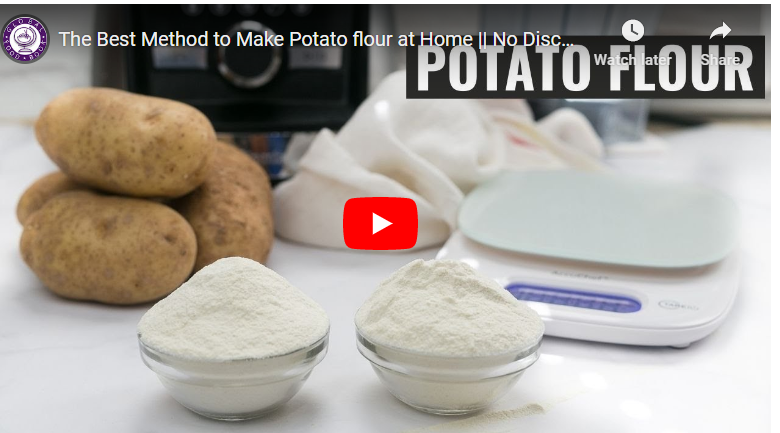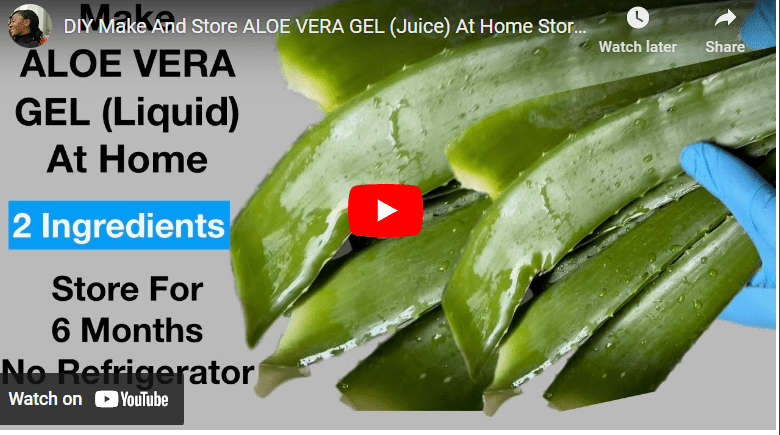Yams are a nutrient-rich, starchy root vegetable that have been a staple food in many cultures for centuries. However, with their limited shelf life, it can be challenging to keep them fresh for an extended period.
If you are looking to preserve yam for long-term storage, there are several methods you can use. One option is to store yams in a cool, dry place such as a basement or cellar. The best way to keep yams fresh for long periods of time is to cure them. This involves soaking the yams in a solution of salt and water for several hours and then drying them in the sun or in a dehydrator. After they are dried, they can be stored in airtight containers in a cool, dry place. With proper preservation, yams can last up to six months in storage.
Fortunately, there are several simple and effective methods for preserving yams for long-term storage. Whether you want to stock up on this nutritious vegetable or simply reduce food waste, preserving yams is a valuable skill to have.
How to Preserve Yam for Long-Time Storage
Yams are an essential food crop in many regions of the world and are often harvested in large quantities. However, fresh yams have a relatively short shelf life, which can make it challenging to store them for long periods.
Read Also: How To Preserve Watermelon For Long Time Storage
Proper storage techniques are essential to preserve the nutritional value and flavor of fresh yams. Follow the step below to preserve fresh yams for long-term storage.
Step 1: Choosing the Right Yams for Storage
The first step in preserving fresh yams is to choose the right yams for storage. When selecting yams for storage, look for ones that are firm and free of cracks, bruises, and blemishes. These are less likely to spoil during storage.
Read Also: How To Preserve Water Leaf For Time Storage
Avoid yams that have soft spots, mold, or signs of insect damage, as these can quickly deteriorate in storage.
It’s also important to choose yams that are mature but not overripe. Overripe yams are more likely to spoil quickly and have a shorter shelf life. Yams that are too young may not be fully developed and will not store well.
Read Also: How To Preserve Vegetables For Long Time Storage
Step 2: Preparing Yams for Storage
Proper preparation of yams is critical to ensuring they have a long shelf life. Follow these steps to prepare yams for storage:
- Clean and wash yams thoroughly to remove any dirt, debris, or residual soil. Use a soft-bristled brush to scrub the yams gently.
- Rinse the yams in cold water to remove any remaining dirt or debris.
- Dry the yams thoroughly. Wipe them with a clean, dry towel or leave them in a well-ventilated area to air dry. Make sure the yams are completely dry before storing them.
- Treat the yams to prevent sprouting. Sprouting can occur during storage, especially if the yams are exposed to light.
Read Also: How To Preserve Tiger Nut For Long Time Storage
To prevent sprouting, you can treat yams with a sprout inhibitor. One way to do this is by washing the yams with a solution of water and sodium bisulfate (1 tsp sodium bisulfate to 1 gallon of water).
Step 3: Methods of Long-Term Storage
There are several methods you can use to store fresh yams for an extended period. Here are some traditional and modern methods you can consider:
Read Also: How To Preserve Sweet Potatoes For Long Time Storage
Method 1: Underground Pits
- Dig a hole in the ground and line it with straw, leaves, or sawdust.
- Place the yams in the pit and cover them with more straw, leaves, or sawdust.
- Cover the pit with a tarp or plastic sheet to keep out moisture and rain.
- The yams will last up to several months in the pit.
- Sand Storage
- Fill a container (e.g., wooden box or plastic container) with clean, dry sand.
- Place the yams in the sand, making sure they are completely covered.
- Store the container in a cool, dry place (e.g., basement, root cellar).
- The yams will last up to several months in the sand.
Read Also: How To Preserve Scent Leaf For Long Time Storage
Method 2: Refrigeration
- Store the yams in a refrigerator with a temperature range of 45°F to 55°F (7°C to 13°C).
- Place the yams in a perforated plastic bag or wrap them in a paper towel to absorb any moisture.
- The yams will last up to several weeks in the refrigerator.
Read Also: How To Preserve Ripe Plantain For Long Time Storage
Method 3: Freezing
- Peel and cut the yams into small pieces.
- Blanch the yams in boiling water for 3-5 minutes.
- Cool the yams in ice water for a few minutes.
- Dry the yams and pack them in freezer-safe bags or containers.
- Store the yams in a freezer with a temperature range of 0°F to -10°F (-18°C to -23°C). The yams will last up to 12 months in the freezer.
Read Also: How To Preserve Spring Onions For Long Time Storage
Step 4: Monitoring and Maintaining Yams in Storage
After storing yams, it’s essential to monitor and maintain them to ensure they remain fresh and edible. Here are some tips to help you monitor and maintain stored yams:
Read Also: How To Preserve Rice from Weevils
- Check the yams regularly for signs of spoilage or damage. Remove any yams that show signs of spoilage or mold to prevent them from affecting the rest of the stored yams.
- Maintain optimal storage conditions. Yams should be stored in a cool, dry, and well-ventilated place. Avoid storing yams in areas with high humidity, as this can cause them to rot.
- Rotate the yams regularly. If you are storing yams in a container, rotate the container regularly to ensure that all the yams get equal exposure to air and avoid condensation from forming.
- Keep yams away from sunlight. Yams should be stored in a dark place to avoid exposure to sunlight, which can cause them to sprout or spoil.
Read Also: How To Preserve Onions For Long Time Storage
Using Stored Yams
When it’s time to use stored yams, there are several ways you can prepare them. Here are some tips to help you use stored yams:
- Soak the yams in water before using them. Soaking the yams in water for several hours before cooking can help rehydrate them and make them softer.
- Cook the yams using your preferred method. Yams can be boiled, roasted, or mashed, among other methods. You can also use stored yams in soups, stews, and other dishes.
- Store any leftovers properly. If you have leftover yams, store them in an airtight container in the refrigerator or freezer.
Read Also: How To Preserve Okra For Long Time Storage
Advantages of Preserving Fresh Yam For Long Time Storage:
- Provides a convenient and cost-effective way to keep yams for extended periods without spoilage.
- Allows you to have a constant supply of yams, regardless of their seasonal availability.
- Helps to reduce food waste by preserving yams that may otherwise go bad.
- Helps to save time and effort by allowing you to prepare and store large batches of yams at once.
Read Also: How To Preserve Oha Leaves For Long Time Storage
Disadvantages of Preserving Fresh Yam For Long Time Storage:
- Stored yams may lose some of their flavor and texture over time.
- Improper storage may lead to spoilage, which can result in the loss of the entire batch of yams.
- Freezing yams may cause them to become mushy and lose their firmness.
- Extended storage periods may result in a loss of some of the nutritional value of the yams.
Read Also: How To Preserve Green Peppers For Long Time Storage
Factors that affect Preserving Fresh Yam For Long Time Storage:
#1. Temperature
Yams should be stored at a cool and consistent temperature, preferably between 13°C to 16°C, to prevent decay and sprouting.
#2. Humidity
High humidity can cause yams to rot, while low humidity can cause them to dry out and become woody.
Read Also: How To Preserve Kiwi For Long Time Storage
#3. Airflow
Proper airflow is essential to prevent the buildup of moisture and mold growth.
#4. Variety
Some yam varieties are more susceptible to spoilage and decay than others, so it’s essential to choose the right type of yam for storage.
Read Also: How To Preserve Locust Beans For Long Time Storage
#5. Condition
Only fresh and healthy yams should be chosen for storage, as damaged or diseased yams may rot and spoil quickly.
Best practices for Preserving Fresh Yam For Long Time Storage:
- Choose fresh, healthy yams for storage.
- Wash and dry the yams thoroughly before storing.
- Store yams in a cool, dry, and well-ventilated area, away from sunlight.
- Use airtight containers or bags to prevent moisture and air from entering.
- Rotate the yams regularly to ensure even exposure to air and prevent moisture buildup.
- Monitor the yams regularly for signs of spoilage or decay.
- Soak the yams in water before using them to rehydrate and soften them.
- Cook stored yams using your preferred method, such as boiling, roasting, or mashing.
- Store any leftover yams properly in an airtight container in the refrigerator or freezer.
Read Also: How To Preserve Green Peas For Long Time Storage
How To Preserve Yam For Export
Preserving yam for export requires careful handling and storage to ensure the yams remain fresh and retain their quality. Here are some steps to follow when preserving yam for export:
- Select high-quality yams that are free of damage and disease.
- Wash the yams thoroughly and dry them before packing.
- Wrap the yams individually in paper or newspaper to protect them from bruising during transit.
- Pack the yams in crates or containers, leaving enough space for air circulation.
- Store the yams in a cool, dry, and well-ventilated area to maintain their freshness during transit.
- Monitor the yams regularly for signs of spoilage or decay and remove any affected yams immediately.
Read Also: How to Preserve Irish Potatoes For Long Time Storage
Modern Method Of Storing Yam
Modern methods of storing yam include the use of refrigeration and modified atmosphere packaging.
Refrigeration involves storing yams in a temperature-controlled environment, while modified atmosphere packaging involves packaging the yams in a modified atmosphere to extend their shelf life.
Read Also: How To Preserve Jackfruit For Long Time Storage
These methods require specialized equipment and are more suitable for commercial storage and distribution.
How To Preserve Peeled Yam Overnight
To preserve peeled yam overnight, follow these steps:
- Rinse the peeled yam with cold water to remove any starch.
- Place the yam in a bowl or container and cover it with water.
- Add a few drops of lemon juice or vinegar to the water to prevent discoloration.
- Cover the container with a lid or plastic wrap and store it in the refrigerator overnight.
- Drain the water and rinse the yam with cold water before using it.
Read Also: How To Preserve Lettuce For long Time Storage
How To Store Cut Yam In The Fridge
To store cut yam in the fridge, follow these steps:
- Rinse the cut yam with cold water to remove any starch.
- Pat the yam dry with a clean towel.
- Place the yam in an airtight container or zip-lock bag.
- Store the container or bag in the refrigerator.
- Use the cut yam within 2-3 days for best quality.
Read Also: How To Preserve Green Beans For Long Time Storage
Can I Freeze Yams Raw
Yes, you can freeze yams raw, but it’s essential to prepare them properly to prevent freezer burn and loss of quality. Here’s how to freeze yams raw:
- Wash and peel the yams.
- Cut the yams into small chunks or slices.
- Blanch the yams in boiling water for 3-5 minutes.
- Drain and cool the yams quickly in cold water.
- Pat the yams dry and place them in freezer bags or containers.
- Label and date the bags or containers.
- Store the yams in the freezer at 0°F (-18°C) for up to 6 months.
Read Also: How to Preserve Ogbono For Long Storage
Note that frozen yams may not be suitable for recipes that require a firm texture, such as roasted or fried yams.
How To Preserve Yam In The Fridge
Preserving yam in the fridge requires proper storage techniques to prevent spoilage and decay. Here’s how to preserve yam in the fridge:
- Choose fresh, healthy yams for storage.
- Wash and dry the yams thoroughly.
- Wrap the yams in a damp paper towel or cloth.
- Place the wrapped yams in a plastic bag or container with a lid.
- Label and date the bag or container.
- Store the yams in the fridge at 41°F (5°C) or below.
- Check the yams regularly for signs of spoilage, such as mold or discoloration.
- Use the yams within 2-3 weeks for the best quality.
Read Also: How To Preserve Lemon For Long Time Storage
Note that storing yams in the fridge may cause some loss of flavor and texture over time. It’s best to use them as soon as possible for optimal taste and texture.
Conclusion
Preserving fresh yams for long-term storage requires proper preparation and storage techniques. By choosing the right yams, preparing them correctly, and using the right storage methods, you can extend their shelf life for several months.
Monitoring and maintaining stored yams is also essential to ensure they remain fresh and edible. By following the steps outlined in this article, you can enjoy fresh yams for an extended period.



